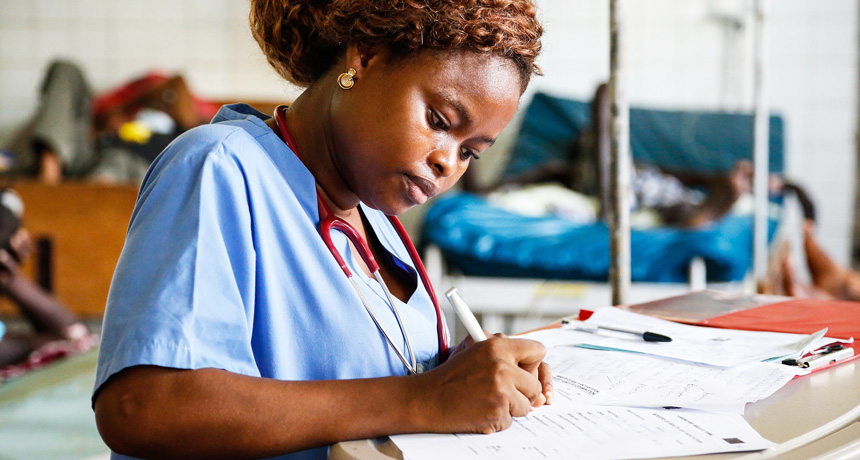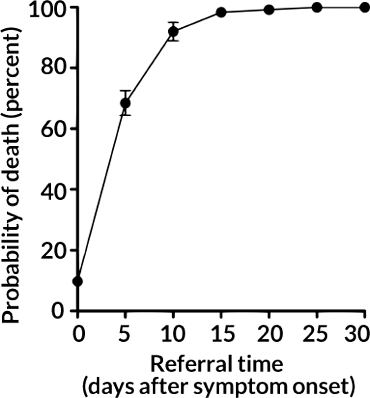For Ebola patients, a few signs mean treatment’s needed — stat
New scorecard could help doctors quickly prioritize who needs help

EBOLA BY THE NUMBERS Looking at some key risk factors may help health care workers triage Ebola patients.
U.K. Department for International Development/Flickr (CC BY 2.0)
 People who sought treatment soon after symptoms of Ebola appeared were more likely to recover from the infection. For each day treatment was delayed in the first 10 days of the illness, a patient’s chance of dying rose 12 percent.
People who sought treatment soon after symptoms of Ebola appeared were more likely to recover from the infection. For each day treatment was delayed in the first 10 days of the illness, a patient’s chance of dying rose 12 percent.






